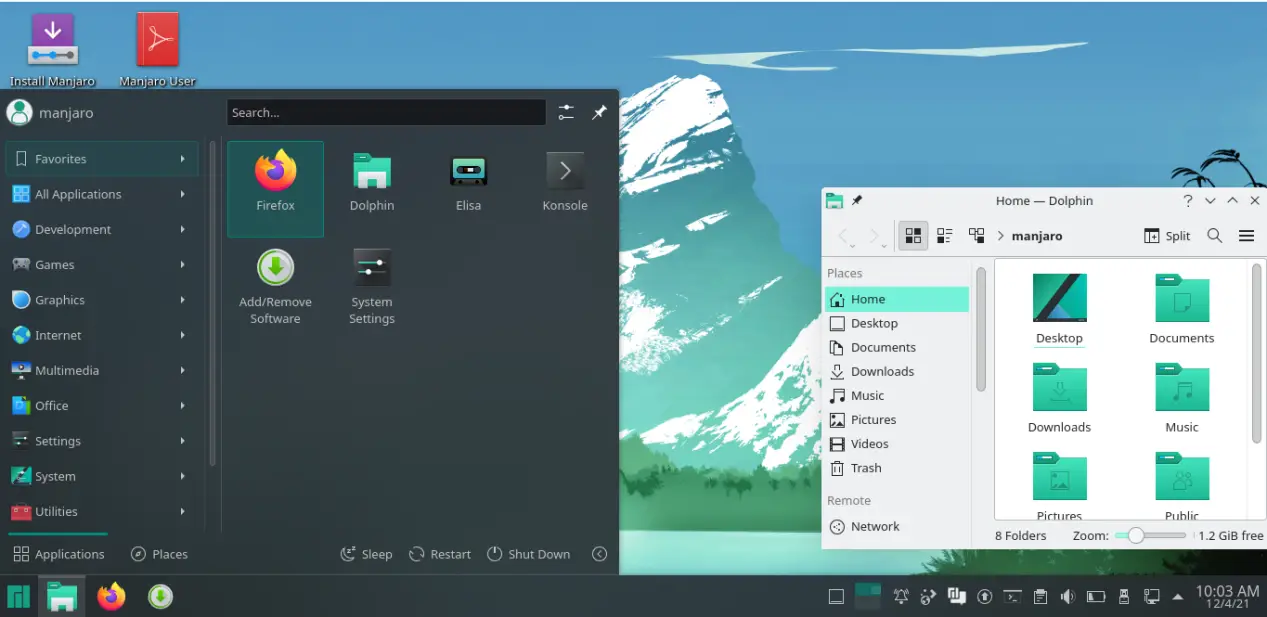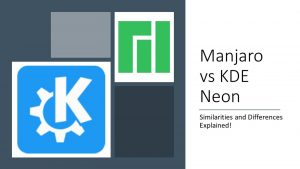Manjaro KDE vs. Neon KDE: Who Masters KDE Better?

Executive Summary

Manjaro KDE and Neon KDE are two popular Linux distributions that cater to users seeking a highly polished and bleeding-edge KDE experience. Both distributions offer their unique strengths and approaches, making it crucial to compare them to determine which one suits your needs best. This comprehensive analysis delves into the key aspects of Manjaro KDE and Neon KDE, examining their user interfaces, stability, software offerings, support, and overall performance.

Introduction
KDE Plasma is a renowned desktop environment known for its user-friendliness, customization options, and feature-rich experience. Manjaro and Neon are two prominent Linux distributions that have adopted KDE Plasma as their primary desktop environment, catering to users searching for a modern and visually appealing operating system. This article aims to provide an in-depth comparison of Manjaro KDE and Neon KDE, highlighting their strengths, weaknesses, and which one emerges as the superior choice for the ultimate KDE experience.
User Interface
Manjaro KDE: Manjaro KDE features a highly customizable and polished KDE Plasma desktop environment with numerous themes, widgets, and effects. It offers a user-friendly experience with an intuitive layout and easy-to-navigate settings.
Neon KDE: Neon KDE presents a sleek and refined KDE Plasma desktop with a minimalist design and subtle animations. It maintains a consistent and cohesive interface across the operating system, providing a seamless and aesthetically pleasing experience.
Stability
Manjaro KDE: Manjaro KDE is based on Arch Linux, which is known for its rolling release model. This means that Manjaro KDE receives continuous updates, including the latest KDE Plasma versions and security patches. However, the rolling release approach may occasionally introduce minor stability issues due to the frequency of updates.
Neon KDE: Neon KDE employs the Ubuntu LTS (Long Term Support) as its base, ensuring stable and well-tested system components. The Ubuntu LTS model provides extended support, regular security updates, and predictable release cycles, offering a more stable experience compared to rolling release distributions.
Software Offerings
Manjaro KDE: Manjaro KDE boasts an extensive software repository with a wide selection of applications and packages, including the latest KDE software and a vast array of third-party applications. It integrates AUR (Arch User Repository), which grants access to a vast ecosystem of user-maintained packages.
Neon KDE: Neon KDE offers a more curated software selection, focusing on providing a stable and optimized KDE experience. It includes a range of essential KDE applications, productivity tools, and multimedia software, ensuring a balanced and well-rounded software offering.
Support
Manjaro KDE: Manjaro KDE has a vibrant and active community that provides support through forums, mailing lists, and IRC channels. Arch Linux, the base of Manjaro KDE, also offers extensive documentation and a comprehensive wiki for troubleshooting and support.
Neon KDE: Neon KDE benefits from the vast support ecosystem of Ubuntu, including the official Ubuntu forums, community support channels, and extensive documentation. It also receives dedicated support from the KDE Neon team, ensuring a dedicated focus on KDE-related issues and improvements.
Performance
Manjaro KDE: Manjaro KDE, being based on Arch Linux, emphasizes up-to-date software and performance optimizations. It utilizes a lightweight and efficient desktop environment that provides a snappy and responsive user experience, even on older or less powerful hardware.
Neon KDE: Neon KDE strikes a balance between stability and performance. While it may not be as bleeding-edge as Manjaro KDE in terms of software versions, it aims to provide a smoother and more consistent performance over time, ensuring a stable and reliable user experience.
Conclusion
Manjaro KDE and Neon KDE offer distinct approaches to the KDE experience. Manjaro KDE excels in providing a highly customizable and continuously updated desktop environment, suitable for those seeking the latest software and extensive user control. Neon KDE, on the other hand, emphasizes stability and a polished user experience, making it a reliable choice for those who prioritize a balanced and well-supported KDE desktop. The choice between the two ultimately depends on your individual preferences and priorities.
Keyword Phrase Tags:
- Manjaro KDE
- Neon KDE
- KDE Plasma
- Rolling release vs. LTS
- Software offerings

Manjaro KDE is the best! It’s so customizable and I love the AUR. I’ve been using it for years and I’ve never had any problems.
Neon KDE is crap! It’s too simple and there’s no way to customize it. I tried using it for a few weeks and I hated it.
Both Manjaro KDE and Neon KDE are great distros, but they have different strengths and weaknesses. Manjaro is more versatile, but Neon is more user-friendly. It really depends on your individual needs and preferences.
Manjaro KDE is clearly the better distro. It’s more customizable, more performant, and has a larger community. Neon KDE is just a watered-down version of Manjaro.
I use Neon KDE ironically. It’s so basic and uncool, but that’s what makes it so great. It’s like the anti-distro.
Manjaro KDE is the distro for people who think they’re too smart for Neon KDE. But really, they’re just missing out on the best KDE experience out there.
I tried using both Manjaro KDE and Neon KDE, but I ended up giving up on both of them. They’re both too complicated for me. I’m just going to stick with Windows.
In the end, the best KDE distro for you is the one that meets your individual needs and preferences. There is no one-size-fits-all solution.
I’m new to Linux and I’m not sure which KDE distro to choose. Can anyone help me out?
If you’re new to Linux, I would recommend starting with Neon KDE. It’s more user-friendly and easier to get started with than Manjaro KDE.
Both Manjaro KDE and Neon KDE are solid KDE distros. They have different strengths and weaknesses, so it really depends on your individual needs and preferences.
Manjaro KDE is the best KDE distro ever! It’s so customizable and powerful. I love it!
I’m not sure if Manjaro KDE is really better than Neon KDE. I’ve used both of them and I haven’t noticed much of a difference.